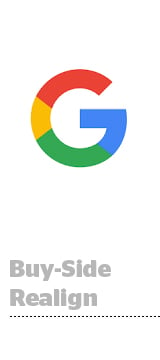 Google is realigning its advertiser product management team by consolidating its buy-side products under a single product leader, AdExchanger has learned.
Google is realigning its advertiser product management team by consolidating its buy-side products under a single product leader, AdExchanger has learned.
Eight-year Google product management exec Brad Bender, who oversees the Google Display Network (GDN), will now also oversee Google’s programmatic buying platform DoubleClick Bid Manager (DBM) and the ad server DoubleClick Campaign Manager (DCM).
The goal is to streamline product management and operations around Google’s programmatic products that serve advertisers by unifying workflow across DBM, GDN and DCM, say sources with knowledge of the company.
It’s important to note: Bender still reports to Paul Muret, the longtime Google Analytics engineering director who succeeded Neal Mohan in November as VP of display and video advertising when Mohan went to YouTube, though a source indicated Bender had assumed some of Muret’s responsibilities.
Mohan’s departure as VP of display and video advertising left large footprints for Muret to fill who, according to AdExchanger sources, is “brilliant” in analytics and engineering and a “great guy,” but “not an ad tech person.”
Before the position was filled, Bender’s name was floated as a possible candidate to replace Mohan because of his longtime experience working directly with the display chief and for his programmatic product management experience.
Bender’s expanded responsibilities within the DoubleClick family provide a nice complement to programmatic sales exec Sean Downey, DoubleClick’s current managing director, sources say. Some describe Bender as Google’s main programmatic product guy on the buy side, while Downey is the go-to for platform sales.
Mohan’s departure marked a significant shift in the DoubleClick chain of command. Bender’s growing share of product governance is one of the first visible changes to the DoubleClick (buy-side) product org structure since the transition.
In addition to leading product management for the Google Display Network, Bender has also worked on Gmail monetization efforts, according to his LinkedIn profile.
During a rosy Q4 earnings call last week, Google CEO Sundar Pichai cited momentum in the number of monthly active users across Google properties like the app store Google Play, YouTube and Gmail, which reached one billion users for the first time last quarter.
Ruth Porat, CFO of Alphabet, gave multiple shoutouts to Google’s ads business, claiming “more marketers and publishers [were turning to] programmatic through our DoubleClick platform.”













